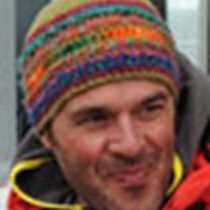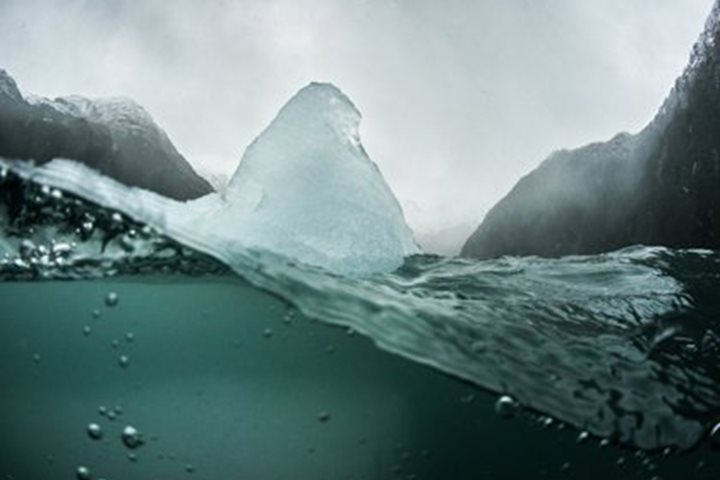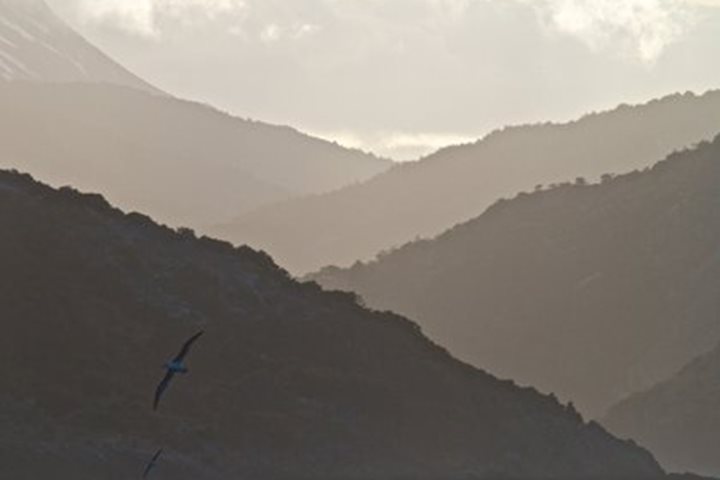Magellan, Thomas Cavendish, Sir Francis Drake, John Davis, Captain Fitz Roy and Darwin—to name a few—are some of the navigators, explorers, and scientists during the last five centuries that have preceded us into sailing the muddy waters west of the entrance to the Deseado Estuary (Ría) and into the red canyons that form this beautiful river bed now invaded by sea water. For a few early risers, the day started with a stormy view at the mouth of the ría, alternating brief hail storms with rain showers that created an eerie feeling and proved to be the norm for most of the day. In Patagonia, if you don’t like the weather, you wait five minutes, the saying goes. A sense of exploration awakened quickly, with the first gust of cold wet air outside the ship, and we were rapidly told that we already were onto plan ‘C’ before even getting of the ship. Most roads were impassable on account of the rain and the “expedition” really kicked on from the minute we walked into the pier.
The several available options included a Zodiac cruise in the phenomenal maze of islands and reddish volcanic cliffs. These are the grounds of the early season breeding attempts of red-legged, rock, imperial and neotropic cormorants, which were very aware of the presence of the predatory dolphin and kelp gulls and the snowy sheathbills which, in turn, were in search of a meal for their own chicks. Skilled boat maneuvering got us in close proximity to these uncanny approachable birds and some South American sea lions in the process of defining territorial claims and enticing females to their hard won patch of rock. The spring is in full swing (although it felt like winter most of the day!) in this part of the world, and the Patagonian infamous ‘roaring forties’ that usually dominate the season gave us chance to test our stamina for cold air in this hidden jewel on the Atlantic coast. No matter the weather, by the time we were on the boats, surrounded by Commerson’s dolphins and a myriad of seabirds, the feeling was that we were in paradise anyway. During the day, crisscrossing groups of exited visitors met briefly on the docked National Geographic Explorer to warm up, pick up more clothes, a meal or a hot chocolate and share the experiences of the places and wonders they have just seen.
We also had the chance to visit the neatly organized train station, recently recovered from its derelict state, and where we were treated to a couple of typical Argentinean dances including a tango demonstration. We also visited the Swift Museum, holding treasures from a sunken ship of centuries past that brought us back to the hardships those early explorers must have endured to discover and survey this long gone river, now inundated by the waters of the mighty South Atlantic ocean, to which we sail on at the very end of the day.







